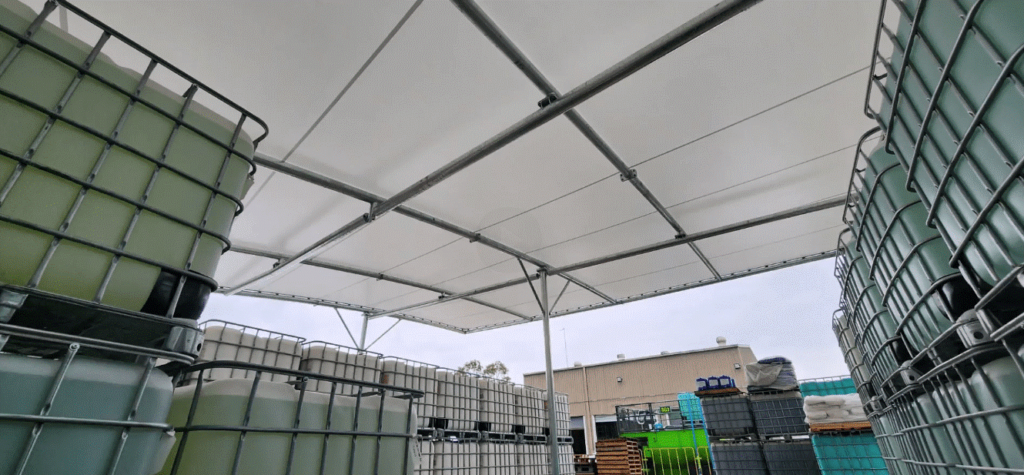YOU ARE HERE:

A Comprehensive Guide to Commercial Shade Structures
Jamie Howard In Commercial Shade Structures
In the ever-evolving world of commercial architecture and design, the significance of outdoor spaces cannot be overstated. Whether it’s a bustling restaurant patio, a serene office courtyard, or a vibrant public park, creating comfortable and functional outdoor environments has become a top priority. One essential element in achieving this is the incorporation of commercial shade structures. In this article, we will explore the key aspects of these structures, addressing common questions such as cost, materials, design considerations, and height specifications.
How much does a commercial shade structure cost?
The cost of commercial shade structures can vary widely based on several factors. The size, design complexity, materials used, and installation requirements all contribute to the overall expense. On average, commercial shade structures can range from a few thousand to several tens of thousands of dollars.
Simple fabric or canvas structures supported by steel frames tend to be more cost-effective, making them suitable for smaller budgets. These basic structures provide adequate shade and are often used in temporary or seasonal settings. On the other hand, more elaborate structures with advanced engineering, high-quality materials, and custom designs can significantly increase the overall cost.
To get a precise estimate, it is advisable to consult with reputable shade structure manufacturers or contractors who can assess your specific needs and provide accurate pricing based on your project requirements.
What is the best shade structure material?
Choosing the right material is a crucial decision when it comes to commercial shade structures. The material not only affects the aesthetic appeal but also influences durability, maintenance, and overall performance. Here are some popular materials used in commercial shade structures:
Fabric:
Polyethylene: Commonly used for budget-friendly options, polyethylene fabric provides decent UV protection and comes in various colours. However, it may have a shorter lifespan compared to other materials.
- PVC-Coated Polyester: Known for its durability and resistance to tearing, PVC-coated polyester is a more robust option. It offers excellent UV protection and is suitable for long-term use in commercial settings.
- Serge Ferrari Fabric: Renowned for its high-performance architectural materials, Serge Ferrari offers a range of durable and innovative fabrics for shade structures. Their fabrics often feature advanced coating technologies that enhance UV resistance, colour retention, and overall longevity.
- Rainbow Shade Fabric: Another notable player in the fabric industry, provides a variety of fabrics suitable for commercial shade structures. Known for their quality and durability, Rainbow Shade offer excellent UV protection and can withstand the rigors of outdoor exposure.
- These additional fabric options from companies like Serge Ferrari and Mehler bring a new level of quality and technology to commercial shade structures. Consulting with shade structure manufacturers who utilize these fabrics can provide insights into the specific benefits and applications of each material, ensuring the best choice for your project.
Metal:
Aluminium: Lightweight and corrosion-resistant, aluminium is a popular choice for shade structure frames. It requires minimal maintenance and can withstand various weather conditions.
Steel: Known for its strength, steel is a sturdy option for supporting shade structures. However, it may be prone to rust, so proper coating or galvanization is essential for longevity.
Wood:
Treated Wood: Wood provides a natural and aesthetically pleasing option for shade structures. Treated wood is resistant to decay and insects, making it suitable for outdoor use. However, it may require more maintenance compared to metal options.
The best material depends on the specific requirements of your project, considering factors such as climate, budget, and desired aesthetic.
What is a shading structure?
A shading structure is a designed element intended to provide shade and protection from the sun’s rays. It encompasses a variety of architectural features, including pergolas, external awnings and blinds, umbrellas, and other customized installations. The primary purpose of a shading structure is to create comfortable outdoor spaces by reducing direct sunlight and lowering ambient temperatures.
Commercial shading structures go beyond mere functionality; they contribute to the overall design and atmosphere of a space. They can be integrated seamlessly into the architecture, enhancing the visual appeal of outdoor areas while serving a practical purpose.
Shading structures come in various shapes and sizes, allowing for versatility in design. Whether it’s a sleek and modern commercial sail shade, a classic pergola with retractable awnings, or a futuristic tension structure, the options are diverse, catering to the unique needs of each commercial space.
How tall should a shade structure be?
The height of a shade structure depends on its intended use, the size of the area it needs to cover, and local building regulations. Here are some considerations for determining the optimal height of a commercial shade structure:
Functionality:
Seating Areas: For shading over seating or dining areas, a height that allows for comfortable movement and ample headroom is essential. This can typically range from 8 to 12 feet, depending on the design and purpose.
Play Areas: Structures covering play areas may need to be higher to accommodate swings, slides, and other equipment. Heights of 12 feet or more may be appropriate in such cases.
Architectural Integration:
Adjacency to Buildings: When shading structures are positioned near existing buildings, their height should complement the surrounding architecture. Harmonizing with nearby structures ensures a cohesive and aesthetically pleasing design.
Local Regulations:
Zoning and Building Codes: Check local zoning and building codes to determine any height restrictions for commercial structures. Compliance with these regulations is crucial to avoid potential legal issues and ensure the safety of the installation.
Climate Considerations:
Wind Load: In areas prone to strong winds, the height of a shade structure should account for wind load. Low-profile designs or structures with wind-resistant features may be necessary to ensure stability.
In conclusion, the height of a commercial shade structure should be carefully considered in relation to its intended function, architectural context, local regulations, and environmental factors.
Conclusion
Commercial shade structures play a vital role in enhancing outdoor spaces, providing comfort, and contributing to the overall aesthetics of a location. The cost of these structures can vary based on factors such as size, design complexity, and materials used. Choosing the right material, whether fabric, metal, or wood, is crucial for achieving durability, functionality, and visual appeal.
A shading structure, in essence, is an architectural element designed to provide shade and protection from the sun, ranging from simple awnings to elaborate tension structures. When determining the height of a shade structure, considerations such as functionality, architectural integration, local regulations, and climate factors must be taken into account.
Investing in a well-designed and thoughtfully implemented commercial shade structure can transform outdoor spaces into inviting and comfortable environments, fostering a positive experience for customers, employees, and visitors alike.
Share:
Jamie Howard - Director
Co-founder and Director Jamie has been hands-on in the shade and steel industry since leaving school. With over 15 years’ experience in shade, membrane and steel projects, Jamie is excited about the design opportunities shade structures offer in the commercial and industrial sectors. Jamie’s extensive design skills give him a competitive edge in situations with technical design complexity. He has won two personal industry awards for his designs, alongside many company-won awards.

